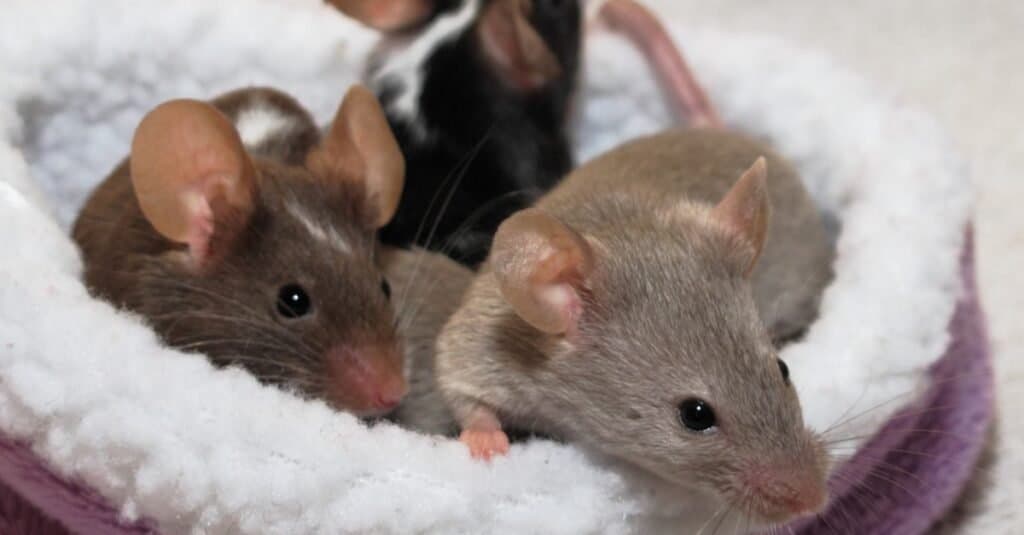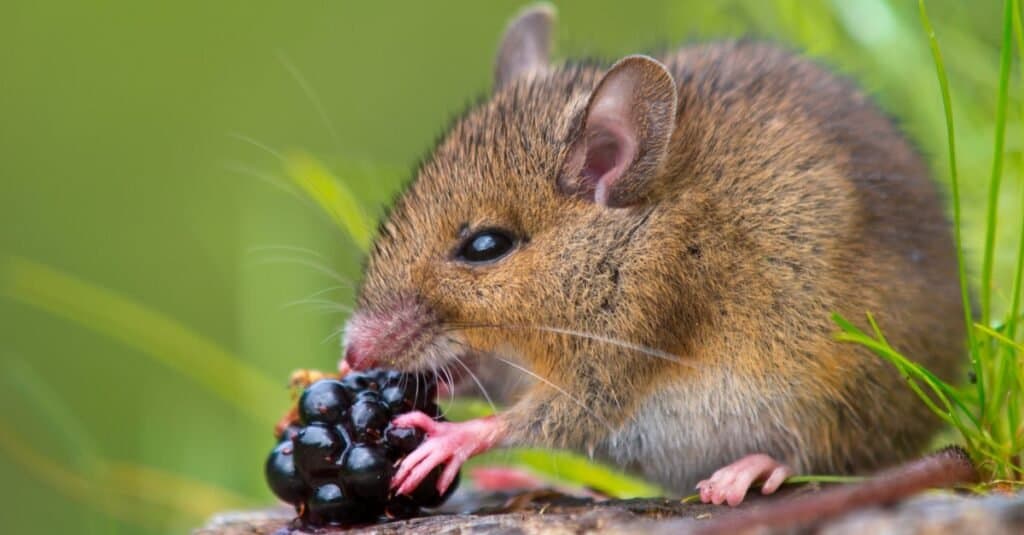Adopting pet mice is a big moment for anyone. Though it doesn’t have the same demands as a cat or dog, they aren’t just a walk in the park. You need to consider factors like their diet, which cage to buy, and what health problems you need to plan for.
You also need to decide how many mice you want to have, and if your intentions are to breed them or simply add a new companion to your home.
Here are some things you need to know about the care of pet mice.
1. Choosing a Mouse Species
Every mouse species is not meant to be a pet. Fancy mice are the most common type that you will find in stores, but they are the closest to a house mouse. The pet mice available will primarily depend on where you live, and they are easily identified by their fur, eye color, and other physical features.
For example, the Agouti mouse comes in many different colors, but the most common is a warm chestnut brown hue. Blue agouti, however, has black eyes with a slate blue tinge to their fur. Mice without any of this ticking with black fur are called self mice, and they are found in black, brown, blue, white, and even lilac.
A house mouse can produce between 40 and 100 droppings per day and are very good jumpers, climbers, and even swimmers. Mice can live in a lab for about two years, however, in the wild, 5 months is usually considered a long live span due to predators.
The care and lifespan of the mouse species don’t vary by much, so the species only serve as a determining factor in what you want your mouse to look like.

Mice can make wonderful pets for most people. They are clean, friendly, fun, and very active creatures who will give you hours of enjoyment and great company.
©Standa Riha/Shutterstock.com
2. Diet
Mice are unique in that they are omnivores, rather than simply eating an herbivorous diet. When you take care of your pet, you need to choose a combination of protein, vegetables, store-bought mouse food, and treats to eat.
Store-bought food provides your pet mouse with grains, which are a necessary source of fiber. The food may also include protein and produce mixed into it. Still, adding separate fruits and vegetables to the diet is necessary. Mice love to eat crunchy produce, including carrots, celery, and apples. The effect is twofold – as the mouse gets the nutritious food that they need, they also keep their teeth from getting too long.
If you want to share some of your favorite food, there are some safe options. Mice can handle hard-boiled eggs, cooked pasta, and even stale bread. Still, pay attention to his size – small mice often only require about 4 ounces of food a day, while larger mice might need twice that amount.
Luckily, a mouse is not very picky, since they’ll mostly eat whatever you present to them. However, the food you choose has a lasting impact on their health and their development, so it is best to look for high-quality options.
Pet mice should also have constant access to clean water to remain hydrated as they eat.
3. Creating a Habitat
The majority of your pet mouse’s life will be spent within the confines of their habitat, so you need to make it perfect.
Since pet mice can be escape artists, choose a cage that they won’t get out of. A wire cage may seem like the best option but check the spacing. Narrow spacing is best, as wide gaps are practically an invitation to play hide and seek with unsuspecting owners.
Next, make sure your pet mice have the right nesting material. Much like in the wild, this nesting material has to be easy for them to shred with their teeth, but you can also provide other soft materials for them. Nesting behaviors are crucial to the health and welfare of mice, even when they are used in labs.
Their cage will need to be cleaned regularly. Males tend to urinate on areas that they want to claim as their territory, and the smell of the urine is quite potent.
4. Exercise Availability
Mice have tons of energy. Their habitat already gives them plenty of room to run, explore, and play, but they also need to get in exercise each day. Rather than bringing them on a walk, the solution is simple – a wheel!
Luckily, pet stores are often full of fun toys that they can use to exercise within their home. Make sure to include a wheel in their cage to give them the opportunity to utilize the energy that they have.
5. Grooming
Mice are rather self-sufficient in their grooming. They only need the occasional bath, and they won’t need their teeth brushed. However, the key to their care is not to set aside a separate budget for grooming but to watch their grooming habits. Mice that groom constantly might be stressed or nervous, indicating the need to reevaluate their environment or any triggers in the home.
6. Social Needs
Pet mice need to have interactions with other mice. While other pet rodents may not thrive with another animal in the cage, pet mice love it. The best arrangements have females with other females or males with other males. However, if you choose to house males together, they may need to be neutered or castrated.
Females and males should only be placed in the same cage if the males have been neutered (unless you are looking to breed them).
7. Dental Care
When it comes to taking care of your mouse’s teeth, you won’t have to break out a tiny toothbrush. The teeth of a mouse are constantly growing. To keep their teeth manageable, they need to have chew toys, cardboard, and other safe materials. They’ll even shred some of these materials to make more bedding for their cage.

©Rudmer Zwerver/Shutterstock.com
8. Common Health Problems
Pet mice are fairly easy to take care of because they don’t have many common health problems like other pets face. Still, there are two big issues that you need to watch out for – skin problems and mammary cancer.
The skin issues that can impact the mouse is a long list. Skin and fur mites are fairly common in situations that breed many mice at the same time, making it difficult to keep up with the spreading problem. They are also prone to staphylococcus infections, ringworm, scaly skin disease, lice, fleas, barbering, and ringtail syndrome. If any of these problems arise, contact a veterinarian ASAP.
Mammary cancer is a type of tumor that comes from a retrovirus of the same name. Though the tumor itself poses risk to the skin, it often metastasizes into lung cancer, leading to an early death.
With consistent checkups with a vet, dealing with these common health problems becomes substantially easier.
9. Lifespan
Even with the best of care, most mice only have a lifespan of 1-3 years old. No one wants to say goodbye too soon to a beloved pet, so it may be best to find a mouse that is as close to its baby months as possible to make the most of its lifespan. Most breeders will post locally or online when they have a new litter available to adopt.
When choosing one or even two pet mice, make sure that they have shiny and smooth fur and bright eyes to ensure that there are no obvious health issues before they come home.
Next Up…
- Are Mice Smart? – Are mice smart? What can they learn? Find out now!
- Are Mice Nocturnal? – Are mice more active at night? Keep reading to learn all about it!
- Are There Really Blind Mice? – Can mice be blind? Read more about them here!
The photo featured at the top of this post is © iStock.com/artisteer
Thank you for reading! Have some feedback for us? Contact the AZ Animals editorial team.






